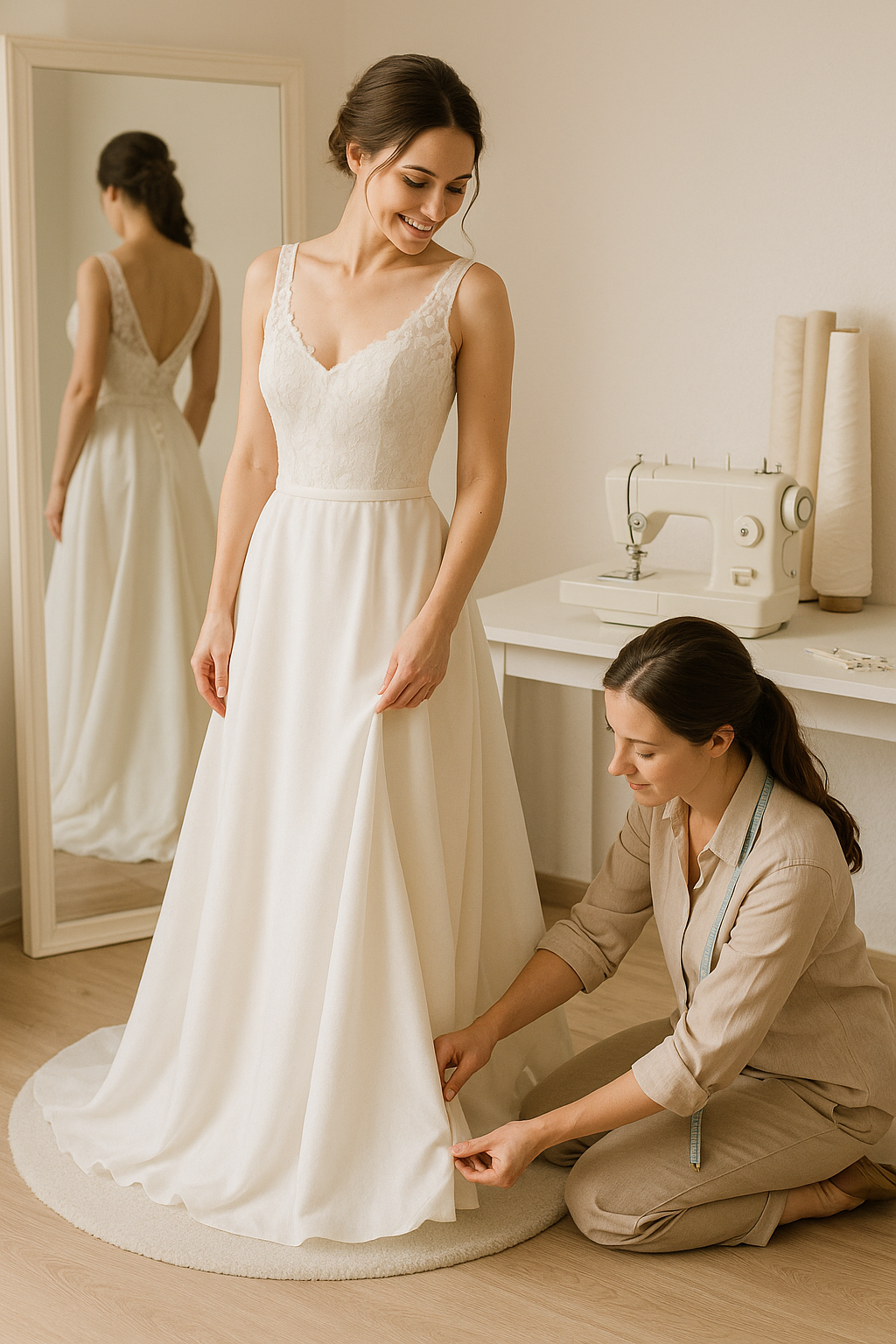Best Stitching Practices for Wedding Dresses 2025
How to Get Wedding Dress Stitching Right Step by Step
Choosing the perfect wedding dress is one of the most exciting parts of planning a wedding. But finding the right fit is just as important as picking the design. That’s where wedding dress stitching comes in. This guide walks you through how to get your wedding dress stitched properly, what to expect, and how to avoid common mistakes. Whether you’re working with a local tailor or a bridal boutique, knowing what to look for can help your dress fit beautifully and comfortably.
Why Wedding Dress Stitching Matters
A wedding dress may look beautiful on the hanger, but it’s the stitching that makes it truly yours. Good stitching shapes the dress to your body, helps you move with ease, and keeps every detail in place from the walk down the aisle to the last dance.
When to Start the Stitching Process
Plan Early
It’s best to begin the stitching process at least two to three months before your wedding. This gives enough time for fittings, adjustments, and final touches without last-minute stress.
Time Needed for Each Stage
- First fitting: Try the dress and note changes
- Second fitting: See how the adjustments feel
- Final fitting: Make sure everything fits well and feels right
Choosing the Right Stitching Expert
Look for These Qualities
- Experience with bridal gowns
- Understanding of fabrics like silk, satin, lace
- Patience and attention to detail
- Willingness to do multiple fittings
Key Parts of Wedding Dress Stitching
Bodice Fitting
The bodice should feel snug but not tight. It supports the upper body and shapes your figure. A loose bodice may cause the dress to slip, while a tight one may feel uncomfortable.
Waist and Hips
This part should follow your natural shape. A well-stitched waist will highlight your figure and let the skirt fall properly.
Length and Hem
The length should suit your height and shoes. Some brides choose heels, others go for flats. Make sure your dress length matches your choice.
Sleeves and Straps
Sleeves should allow easy arm movement, and straps should stay in place without digging into your skin.
Stitching Tips for a Comfortable Fit
- Move around: Walk, sit, and raise your arms during fittings
- Wear your wedding shoes: This helps get the right hem
- Try on with the right undergarments: This affects the fit
Common Stitching Problems and How to Avoid Them
1. Dress Too Tight or Too Loose
Always speak up during fittings. The right stitching should allow movement without pulling or gaping.
2. Delayed Stitching
Starting too late may lead to rushed work. Book your tailor early to avoid time issues.
3. Stitching Over Delicate Fabric
Delicate materials need special care. Make sure your tailor has worked with lace, organza, or similar fabrics before.
4. Ignoring Weather and Season
Summer weddings may need breathable lining, while winter weddings may require extra layers. Keep this in mind when discussing the stitching details.
Wedding Dress Stitching Checklist
Here’s a simple checklist you can follow during the stitching process:
- First fitting done on time
- Bodice fits well and feels secure
- Waist and hip area tailored properly
- Sleeves and straps comfortable
- Dress length matches shoes
- Final fitting at least 1 week before the wedding
- Try walking, sitting, and moving in the dress
Final Thoughts
Wedding dress stitching is not just about making changes; it’s about turning your chosen dress into something that fits you perfectly and feels right for your big day. By starting early, choosing a skilled tailor, and knowing what to look for during fittings, you can feel more confident walking down the aisle.
The right stitching will support you, shape you, and let your dress flow naturally. With the right steps, your wedding dress won’t just look beautiful, it will feel like it was made just for you.
Faqs
What is wedding dress stitching?
It’s the process of tailoring a bridal dress to fit your body shape.
When should I start wedding dress stitching?
Start stitching 2 to 3 months before your wedding day.
How many fittings are usually needed?
Most brides need 2 to 3 fittings for a proper fit.
Can I do wedding dress stitching at home?
Yes, if you have good sewing skills and know bridal fabrics.
What should I wear to my fitting?
Wear the same shoes and undergarments you’ll use on the wedding day.

